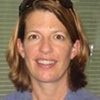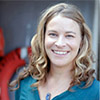 |
|
| SEARCH | OPEN OCEAN NUTRIENTS | ||||||||||
|
 Nutrients in the Open Ocean Presented by Claire Parker, Dr. Kristen Buck, and Dr. Kathy Barbeau - Tuesday, May 5, 2015
This webinar brought us into the world of phytoplankton to shed light on what these tiny creatures can tell us about some big-picture questions about carbon. Nutrients are vital to productivity in the oceans, but can be hard to come by, creating an environment poised to "bloom" if the right ingredients are available. This webinar followed the path of nutrients critical to phytoplankton growth - and explored the question of how that relationship may (or may not) hold a solution to combat climate change, including the question of whether artificially “fertilizing” the ocean with iron is a viable option. Webinar Archive You can watch the archived video of the webinar below. Below the video are the concept maps that were presented, so that you can follow along with the video. Click here (PDF, 72 KB) for a transcript of the Q&A portion of this video. Concept Maps This webinar contained three concept maps. To view any map in full screen, click on the blue wrench and select Open Full Map Viewer. Click on the concepts to access additional resources embedded in the map. To save this map to your CLIMB account, click the blue wrench in the upper left corner and select Copy Map to My Maps. How Do Key Micronutrients Get to the Middle of the Ocean? Claire’s concept map gives an overview of how nutrients enter the open ocean, how they are transported, and the patterns that can be seen across the globe and in the water column. What are the Impacts of Open Ocean Micronutrients on Ocean Life? Kristen’s concept map addresses how the availability of micronutrients can affect the growth of a phytoplankton community, which in turn has effects on the food web and the carbon cycle. Why Should (or Shouldn’t) We Fertilize the Ocean? Kathy’s concept map presents the science of iron fertilization experiments, which aim to create algal blooms in iron-limited areas to increase the amount of carbon reaching the deep ocean. The possible outcomes (both positive and negative) are included on the map. Resources
Kathy Barbeau is a Professor in the Geosciences Research Division, Scripps Institution of Oceanography. She received her Ph.D. from MIT and a B.S. from Southampton College of Long Island University. Her research interests include the biogeochemical cycling of trace metals in marine systems; the biological transformations of trace metal speciation; photochemical redox cycling of trace metals; and metals as limiting or co-limiting micronutrients in marine planktonic systems.
Kristen Buck is an Assistant Professor at the University of South Florida. She received her Ph.D. in Ocean Sciences from the University of California Santa Cruz and a B.S. in Chemistry from Pacific Lutheran University. Research in the Buck lab is focused on the biogeochemical cycling of trace metals in marine ecosystems, with particular emphasis on the role of metal-binding ligands in the cycling of bioactive trace elements like iron and copper.
Claire Parker is a Ph.D. student in the Ocean Sciences Department, University of California. She received a B.S. in Chemistry from Bates College. |
|
|||||||







